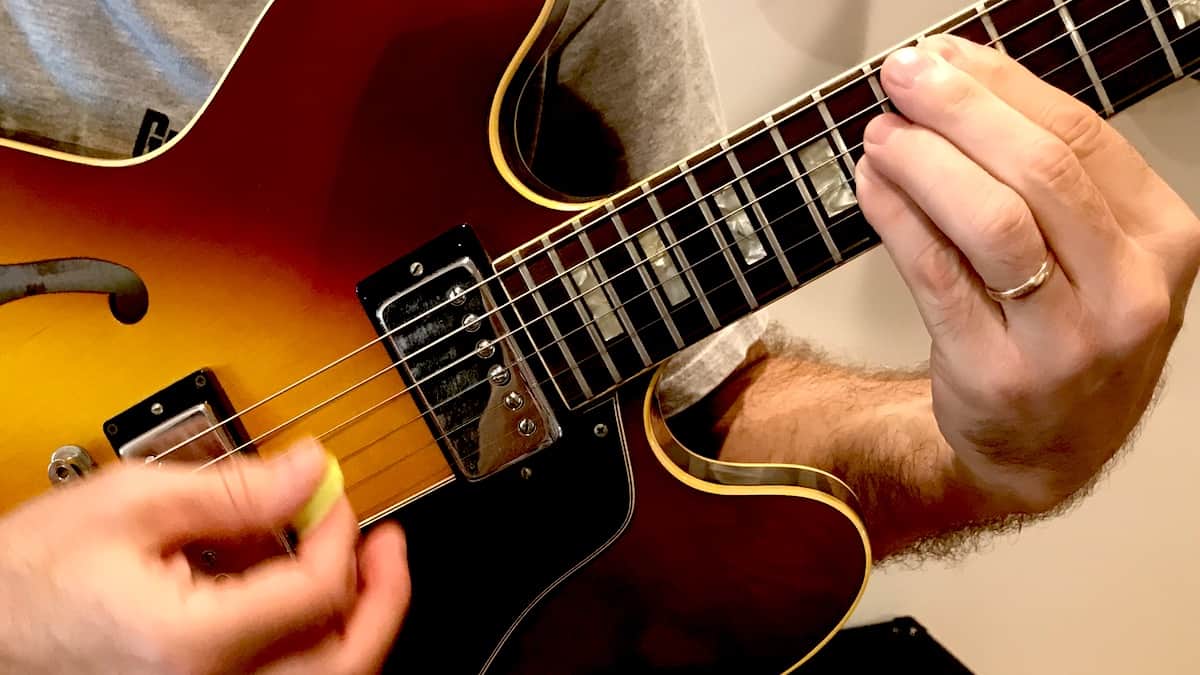Jazz Guitar Lessons
What About Octaves?

In this JGT lesson, jazz guitarist Leon Rodriguez takes a unique look at ‘octaves’ in this music theory lesson specifically for guitarists.
We saw how two tetrachords laid out on a string set of one string defines the diatonic major scale in a really visible way. In the example, we see that the first note of the A tetrachord is one octave higher than the last note of the E tetrachord. The cycle of 4ths/5ths further
Stacking tetrachords further incorporates the
We use identical fingering (1,1,3,4) for every single-string tetrachord so that we intuitively trust it and just focus on the first note of each tetrachord along a somewhat diagonal line of alternating 5ths and 4ths. Finger the left hand in a comfortable “one finger per fret” ergonomic. Tetrachords are common musical words in the language of
The decending ‘slide’ lines up best on the 3rd finger. Ascend and decend each tetrachord individually until intuitive.

Take another look at the octaves from the perspective of
To be continued…Books and On-Line Private Lessons available at www.LeonRodriguezGuitar.com/shop
-
Jazz Guitar Lessons2 weeks ago
New JGT Guitar Lesson: Analyzing “Without A Song”
-
Jazz Guitar Lessons4 weeks ago
New JGT Guitar Lesson: Considering “Falling Grace”
-
Artist Features1 week ago
New Kurt Rosenwinkel JGT Video Podcast – July 2024
-
Artist Features2 weeks ago
JGT Talks To Seattle’s Michael Eskenazi


























